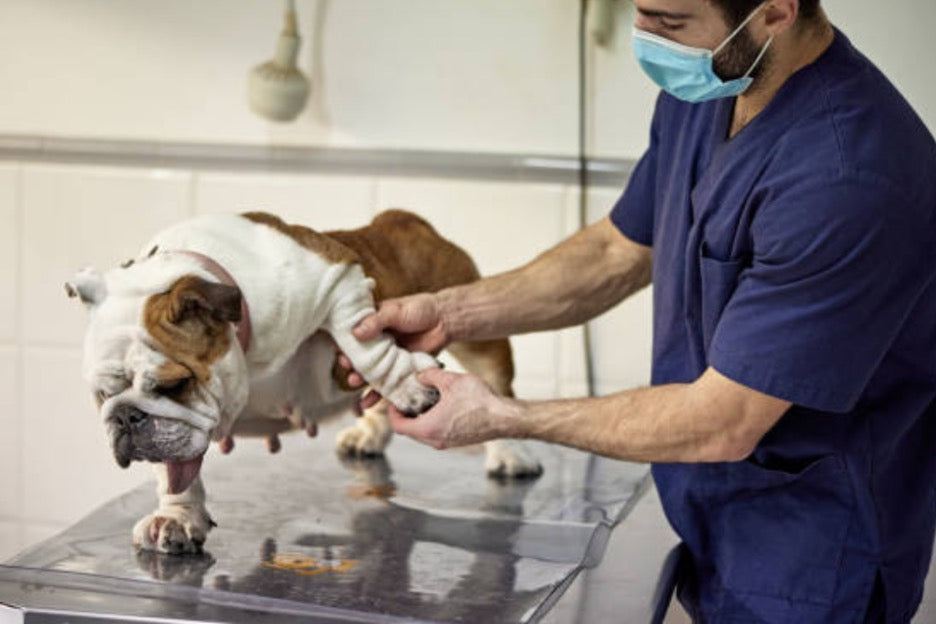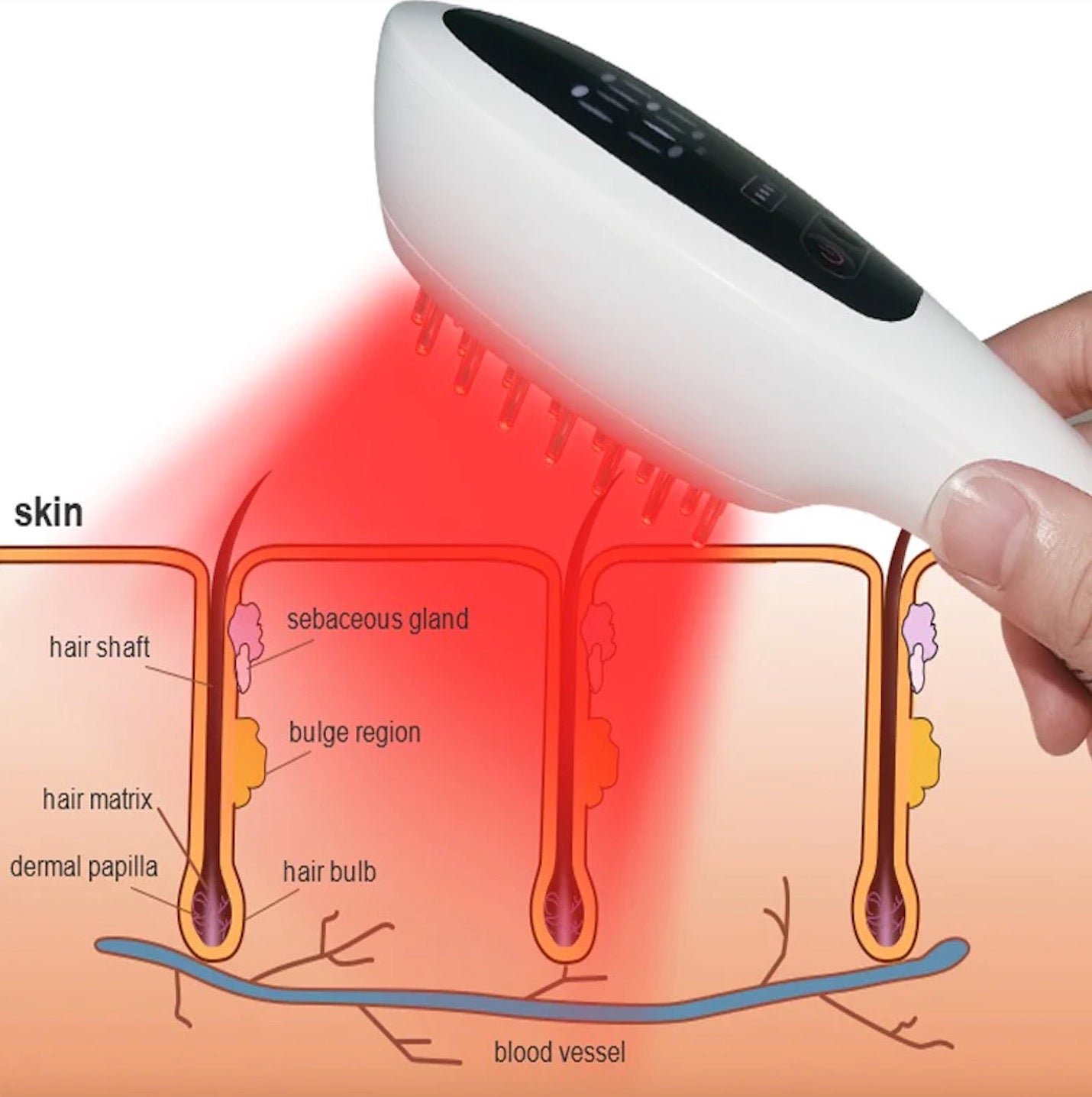Understanding Arthritis in Dogs
Arthritis is one of the most common conditions affecting dogs, particularly as they age. It occurs when the joints become inflamed, causing pain, stiffness, and a range of mobility issues. Just like in humans, arthritis in dogs can significantly affect their quality of life, making everyday activities such as walking, climbing stairs, or even getting up from rest painful and difficult.
What Is Arthritis in Dogs?
Arthritis, or osteoarthritis (OA), is the inflammation of the joints caused by the degeneration of cartilage, which serves as a cushion between the bones. When the cartilage breaks down over time, the bones start to rub against each other, leading to pain, swelling, and reduced flexibility. This progressive condition can affect any joint in the body, but it most commonly impacts the hips, knees, elbows, and spine.
There are two main types of arthritis that can affect dogs:
Degenerative Joint Disease (DJD): The most common type of arthritis, DJD, is caused by the natural wear and tear of the cartilage in the joints over time. This is often seen in older dogs and larger breeds that experience higher mechanical stress on their joints.
Inflammatory Arthritis: This type is less common but can result from autoimmune diseases or infections that cause inflammation in the joints. Conditions like rheumatoid arthritis or Lyme disease can contribute to this form of arthritis.
Common Symptoms of Arthritis in Dogs
Recognizing arthritis in dogs early can help reduce the severity of the condition and improve their quality of life. Some common symptoms to watch for include:
Limping or Lameness: Dogs with arthritis may have difficulty walking or may limp, especially after exercise or during periods of inactivity.
Stiffness: Dogs may exhibit stiffness, particularly after waking up or after lying down for a long period.
Reduced Mobility: Dogs with arthritis may have trouble jumping, climbing stairs, or getting in and out of cars.
Licking or Biting: Some dogs may excessively lick or bite at the affected joint in an attempt to alleviate the discomfort.
Behavioral Changes: Dogs in pain may become more irritable, less active, or more sensitive to touch. They may also show signs of distress when you try to touch their joints.
Muscle Atrophy: Over time, the muscles surrounding the affected joint can weaken due to reduced activity, making the condition worse.
Risk Factors for Arthritis in Dogs
Several factors can increase the likelihood of a dog developing arthritis:
Age: Just like in humans, older dogs are more likely to develop arthritis due to the natural wear and tear of their joints over time.
Breed: Larger dog breeds, such as Labradors, German Shepherds, and Golden Retrievers, are more prone to arthritis due to the increased stress placed on their joints as they grow.
Obesity: Overweight dogs put extra strain on their joints, especially weight-bearing joints like the hips and knees, making them more susceptible to arthritis.
Previous Injuries: Dogs that have suffered from joint injuries, fractures, or dislocations in the past are at higher risk of developing arthritis later in life.
Genetics: Some dogs are genetically predisposed to developing joint issues, especially breeds with hereditary conditions like hip or elbow dysplasia
Why Domer Laser is best for Arthritis in Dogs?
Laser therapy works by delivering low-level laser light at specific wavelengths to penetrate your dog’s tissues and promote healing. The most commonly used wavelengths in veterinary laser therapy are 808nm (medical-grade low-level laser light) and 650nm (red light), each offering distinct benefits for different layers of tissue and types of pain.
- 808nm Wavelength (Medical-Grade Low-Level Laser Light): The 808nm wavelength is a medical-grade low-level laser, which penetrates deeply into your dog’s tissues, reaching muscles, joints, and even bone structures. This wavelength is highly effective for treating chronic pain, inflammation, and conditions like arthritis and deep tissue injuries. The 808nm laser works by stimulating photobiomodulation, which increases cellular activity and circulation at the pain site. This promotes faster tissue healing, reduces inflammation, and provides long-lasting pain relief. It also enhances ATP (adenosine triphosphate) production, providing energy to cells to accelerate recovery.
- 650nm Wavelength (Red laser Light): The 650nm wavelength is effective for treating more superficial tissues, such as the skin and surface muscles. It is particularly beneficial for conditions involving inflammation, soft tissue injuries, and wound healing. The red light helps to reduce inflammation, improve blood flow, and alleviate pain in the body’s surface areas, such as paws, ears, or skin wounds. By enhancing oxygen and nutrient delivery to cells, it speeds up the body’s natural healing processes.
Domer Laser 1300mW handheld laser combines these two wavelengths work synergistically to treat both deep and superficial tissues, allowing for better relief from chronic joint pain and inflammation, and is designed to work effectively for both mild and severe cases of arthritis.
Comparison of Domer Laser vs. Competitors
When choosing the best laser therapy device for your dog’s arthritis, it’s important to compare key features like power, laser wavelength, diodes, treatment modes, and price. Below is a detailed comparison of the Domer Laser 1300mW Handheld Laser against other popular brands: B Cure, Heliopet, and Brandenburge
1. Power and Laser Output
Domer Laser: Offers a total power of 1300mW (1.3W), providing deep tissue penetration ideal for treating severe arthritis pain and chronic inflammation. This higher power ensures faster and more effective results, reducing the need for frequent treatments.
B Cure: Delivers about 1W of power. While effective, it has less power than the Domer Laser, which may require more sessions for similar results.
Heliopet: The total power is not mentioned, but the device is typically designed for lighter treatments, which may not offer the same depth of relief for more severe arthritis cases.
Brandenburge: Provides 800mW of power, which is significantly lower than the Domer Laser. This lower power output may limit its effectiveness for deeper tissue treatment, especially for dogs with chronic pain.
2. Laser Wavelength and Diodes
Domer Laser: Utilizes two wavelengths: 650nm (red light) for surface tissue and 808nm (near-infrared) for deeper tissue penetration. It has 10 laser diodes, providing comprehensive and targeted treatment, addressing both superficial and deep tissue issues like arthritis.
B Cure: It uses 5 laser diodes and lacks information on its exact wavelength. Its design focuses more on superficial tissue treatment, which may limit its effectiveness for severe joint conditions in dogs
Heliopet: Also uses 5 laser diodes. The wavelength and effectiveness for deeper tissues aren’t specified, suggesting it might not be as effective for chronic or deep arthritis pain.
Brandenburge: Equipped with 10 laser diodes, it uses 808nm wavelength, similar to Domer Laser for deep tissue treatment. However, its lower power may affect its efficiency in addressing arthritis pain compared to the Domer Laser.
3. Treatment Mode
Domer Laser: Offers both pulse and continuous modes, providing flexibility for different treatment needs and the ability to tailor therapy based on the dog’s specific condition and comfort level.
B Cure: Also features pulse mode, but lacks the continuous mode. This limits the variety of treatment options compared to the Domer Laser.
Heliopet: Details about its treatment modes are not mentioned, which might indicate fewer customization options for different types of treatment.
Brandenburge: It is equipped with pulse mode, similar to the B Cure, which might not offer the full range of treatment options that the Domer Laser provides.
4. Portability and Design
Domer Laser: Designed to be portable and lightweight, the Domer Laser is easy to handle and ideal for home use. Its ergonomic design ensures comfort during treatment.
B Cure: Portable and designed for easy home use, but it has fewer features compared to the Domer Laser, such as fewer laser diodes and a lower total power.
Heliopet: Portable but lacks information on detailed design aspects. Its usability for home treatment is less clear due to limited specifications.
Brandenburge: Portable with a convenient design, but its lower power and fewer treatment modes could affect its overall effectiveness for arthritis.
5. Price
Domer Laser: Priced at $419, the Domer Laser offers excellent value for its power, design, and effectiveness in treating arthritis, especially with its high power output and 10 laser diodes.
B Cure: Priced at $606, it is a more expensive option, though it lacks the high power and versatility of the Domer Laser.
Heliopet: At $349, it is the most affordable of the options, but its lower power and fewer laser diodes make it less suitable for deep arthritis treatment.
Brandenburge: Priced at $700, this option is among the most expensive, but its lower power and limited features make it less cost-effective compared to the Domer Laser.
6. Warranty
Domer Laser: Comes with a 1-year warranty, ensuring reliability and customer support.
B Cure: Also offers a 1-year warranty, similar to the Domer Laser.
Heliopet: No specific warranty details provided, which could be a drawback for users seeking long-term support.
Brandenburge: Offers a 1-year warranty, matching the Domer Laser and B Cure.
Conclusion
The Domer Laser 1300mW Handheld Laser emerges as a superior option for treating arthritis in dogs, offering greater power (1300mW), more laser diodes (10), and a combination of wavelengths (650nm and 808nm) for both deep and superficial treatments. Its pulse and continuous modes, alongside a competitive price of $419, make it a top choice for pet owners looking for effective, at-home arthritis therapy.




